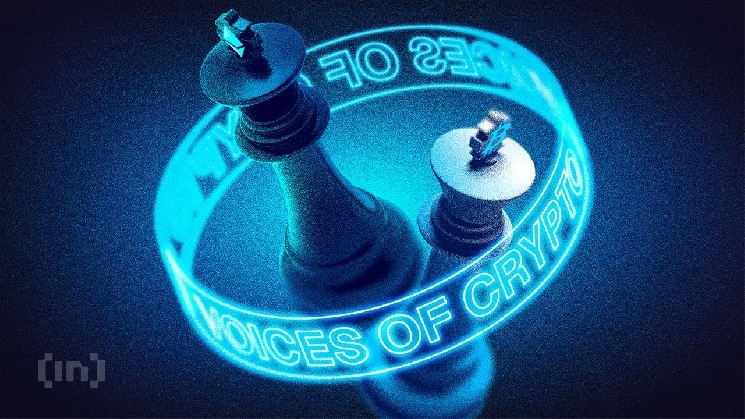Listing on a top-tier centralized exchange (CEX) has long been considered the ultimate prize, the moment a fledgling cryptocurrency project moves from niche experiment to global financial asset. Historically, this moment has been synonymous with explosive growth, often resulting in the legendary “Binance pump” or “Coinbase effect.”
However, the landscape has changed significantly. Increased regulatory oversight, a more sophisticated investor base, and the rise of decentralized exchanges (DEXs) have fundamentally changed the listing game. Exchanges are no longer just market intermediaries. They have evolved as gatekeepers of authenticity, and their listing criteria reflects this new mission.
We spoke to industry leaders including major exchanges, research firms, and infrastructure providers. LCX, Trezor, BloFin, XYO, Gate, Bitget, Eightcap, Xandeum, Phemex To understand what it really takes to secure a top-tier listing today and where the balance of power lies between the old and new guards of crypto trading.
What the project must demonstrate today
The consensus across the industry is clear: Gone are the days of listing projects based purely on social media buzz and reputation. pre-salt The hype is over. Exchanges prioritize substance over speculation and seek fundamental strength that can withstand both market cycles and regulatory pressures.
for Patrick Murphy, Eightcap Managing Director UK and EUThe most important element is evidence of genuine activity.
“From a market perspective, the most important factor is proof of real demand and activity among real users. Exchanges like Binance and Coinbase are not just listing assets; they are driving liquidity and trading volumes that directly impact growth and user engagement.”
Murphy emphasizes that securing a top listing requires projects that demonstrate verifiable, organic trading activity and adoption, evidenced by on-chain metrics such as wallet growth, transaction volume, and token velocity. Additionally, a strong, active, and loyal community is critical, as is alignment with global compliance and regulatory frameworks.
Those who strongly agree with this view are Monty CM Metzger CEO and Founder LCX.com And then TOTO total tokenizationHe claims his platform is now held to the same standards as the industry giants.
“Today, listing on LCX carries the same prestige and rigor as listing on Coinbase or Binance. The most important factor a project must prove is substance, not just market momentum. Exchanges are no longer chasing volume, they are managing credibility. At LCX, we look for projects built for long-term sustainability, with transparent tokenomics, a clear compliance framework, and real practicality.”
This focus on substance is the foundation of a compliance-focused platform. bigetis a world-class platform and has implemented strict criteria to filter out speculative and short-lived projects. their COO, Vugaa cow zadehemphasizes the need for demonstrable strength before listing.
“All blockchain projects seeking to list tokens on the platform undergo a comprehensive legal review to verify code quality, security, and compliance…Special attention is paid to tokenomics, including a detailed analysis of token supply, distribution, and utility, as well as the experience and qualifications of the development team.”
In short, the new listing standards will revolve around three key pillars: genuine utility, on-chain traction, and compliance readiness. as Sebastian Gilquin, Head of Trezor BD and Partnershipsthe memo said exchanges are looking for “liquidity, compliance provisions, and strong on-chain traction,” adding that “that’s what exchanges are looking for right now, not Binance’s Aster or Bybit’s Apex just for the hype.” The focus has definitely shifted from the project. potential to that proven our ability to sustain markets and navigate complex legal environments;
Impact of listing in mature markets
The most nostalgic question for longtime crypto investors is whether the fabled “public pump” is still a reliable event. Although the resounding answer is no, the main list still contains invaluable validation.
Monty CM Metzger from 60 Here is a complete summary of this change:
“The impact of listings on major exchanges is not what it used to be. In past cycles, new listings could cause price spikes overnight. Today, markets are much more sophisticated and investors are focused on fundamentals, not just FOMO. LCX, Binan CE, or Coinbase listing still validates a project, but the real value now lies in the depth of liquidity, compliance, and long-term confidence.The era of speculative pumping has given way to more mature markets driven by utility and regulatory demands. ”
This maturation is rooted in fundamental changes in market psychology. Vugar Usi Zade, COO, Bitgetargues that the days of public listings guaranteeing large and widespread price increases are over, as the underlying market lacks the necessary technological catalysts. For him, pumps need evidence of innovation.
“Unfortunately, I don’t think we’ll ever see such a huge pump, because there’s no logical reason behind it,” Ushi-Zed says. “There are no technological advances. We are not seeing significant results from the projects. Why are prices going up? Is it just because now is the time? Not so.”
This perspective highlights an important recognition by exchange executives that listing volumes need to lead to sustainable ecosystem growth rather than short-term speculation.
Marcus Levin, XYO Co-Founderpoint out that the short-term impact has been significantly smaller.
“The short-term effect is now smaller as the market has matured. Listing still increases visibility and liquidity, but traders want more.”
“The future cannot be pay-to-play. It must be proven to be pay-to-play. Listings must be merit-based, transparent, and tied to real value creation. Exchanges have an obligation to make it clear to users why their tokens deserve listing. That’s how you build lasting trust, not short-term hype.”
How scrutiny is reshaping the list
The growing regulatory shadow will undoubtedly be the most influential force in changing the listing process. Global regulators, led by bodies such as the SEC and the European Union’s MiCA framework, are pressuring exchanges to take greater responsibility for the tokens they list, effectively forcing them to act as regulatory compliance filters.
Kevin Lee, CBO, Gatehighlights the dramatic effect this has had, also citing specific regulatory changes.
“While regulatory oversight is increasing, we are also seeing regulators develop more consistent and consistent frameworks across jurisdictions. This actually works to the advantage of global exchanges like Gate, as they can leverage established compliance processes across different geographies.”
Lee explains that Gate has strengthened its compliance framework to enable it to evaluate projects across three key dimensions: regulatory compliance across multiple jurisdictions, technical security audits, and long-term utility beyond speculative trading. What is the result?
“Projects without clear regulatory pathways or utility features are increasingly being filtered out early in the review process. This high standard actually benefits the industry by reducing retailer exposure to high-risk speculative tokens while preserving access to legitimate innovation.”
The regulatory environment is not just about avoiding penalties. This is a competitive advantage for exchanges such as: 60actively incorporates compliance into its service delivery. Monty CM Metzger Note:
“Regulatory oversight is raising the bar for listings. Projects require transparent tokenomics, governance, and legal clarity. At LCX, we have submitted MiCA whitepapers for multiple projects, processed ESMA registration to allow trading, and provide this as part of the listing process.”
Bitget’s extensive review process focuses on the financial and ethical background of projects and is designed to proactively protect our users. Check for high-risk indicators such as disproportionate fully diluted valuations (FDV) and team concentration.
“Projects considering listing their tokens on Bitget must undergo rigorous legal and technical reviews to assess code quality, security measures, and regulatory compliance,” emphasized Hon Ng, Bitget’s chief legal officer.
The important point is that regulatory readiness is a core and non-negotiable element of today’s project architecture.
Importantly, regulatory compliance is no longer a bolt-on feature, but a core, non-negotiable component of a project’s architecture.
CEX vs. DEX: complementary realities
The eternal debate in cryptocurrencies revolves around whether the decentralized spirit of DEXs will eventually replace the centralized control of CEXs. For projects aiming for global accessibility, today’s answers are nuanced. CEX and DEX are now complementary and play different but equally important roles.
Kevin Lee from gate A complete summary of this dynamic is as follows.
“DEXs serve as important incubators for early-stage projects, offering permission-free listings and global access with no KYC barriers. However, our data shows that CEX listings serve as important incubators for early-stage projects, offering permission-free listings and global access with no KYC barriers. The reality is complementarity rather than competition. DEXs are better at price discovery for emerging tokens, with the 70x volume increase typically observed when successful DEX tokens migrate to centralized platforms.
This significant volume increase highlights the unique role of CEX in deploying global capital and providing institutional investors with the depth of liquidity they need. Mr. Lee emphasizes the difference in customer base as follows.
“From a global accessibility perspective, DEX provides important geographic reach, while CEX provides the institutional-grade infrastructure that pension funds, family offices, and corporate finance need. As the industry continues to grow and mature, we believe there is a sufficiently broad audience in the market for both CEX and DEX solutions, and we need to be positioned to serve both.”
Griffin Ardern, Head of Research and Options Desk, BloFinthis view positions the CEX listing as an important “credit guarantee.”
“DEXs and self-listing mechanisms will be essential channels for future projects to obtain pre-listing funding, but they cannot completely replace the role of CEXs.Listing on a large and dominant CEX (such as Coinbase) can be understood as a form of “credit approval” meaning that the project is “verified.” Self-listing cannot achieve this, so investors must take relatively high risks when purchasing tokens at the pre-listing stage. ”
Further underscoring the enduring importance of CEX in accessing key market bases, Bernie Bloom, Founder and CEO, Xandeumemphasizes the role of CEX as a customer channel.
“Listing on a major exchange still provides significant market access for emerging projects,” Blume said. “It’s one thing to go public, it’s another to make enough waves to generate interest in the market. Large centralized exchanges are organizations that can spend millions of dollars building and maintaining relationships with potential customers, something decentralized exchanges simply cannot do.” Therefore, the customer base of a large, centralized exchange is a major asset for an emerging project.Listing on one of these reputable exchanges with access to the right market will continue to be a great asset for that emerging project.”
While DEXs are gaining momentum and meeting the demand for self-custody; Sebastian Gilquin of Trezor (“Users want control, not gatekeeping, and that’s where Trezor strives in this new dynamic of self-sovereignty and freedom.”) The path to mass adoption still goes through centralized hubs.
Marcus Levin, XYO Co-Founder Finally, we suggest that the most successful projects take advantage of both worlds.
“DEXs are rapidly improving, but for now, CEXs still provide significant liquidity and user accessibility. The most successful projects use both. CEX listings bring scale and user clarity, and DEXs bring openness and interoperability. Over time, the balance will shift towards decentralized systems, but CEXs will continue to play a key role in bridging traditional markets and the crypto economy.”
Conclusion: A new credential of authenticity
Cryptocurrency gatekeepers have adjusted their standards. The listing process has evolved from a speculative beauty pageant to a rigorous due diligence audit driven by regulatory requirements and demands for provable utility.
Today, securing a prestigious listing is less about gaining name recognition and more about gaining credibility. Projects must demonstrate real-world implementation, robust on-chain metrics, and a proactive approach to regulatory compliance. While decentralized exchanges are essential for innovation and early price discovery, centralized exchanges remain an essential bridge for institutional capital and mass market liquidity.
Lists are no longer destinations. This is a highly regulated checkpoint that verifies a project’s compliance with the global financial stage. The future of the listing game belongs to the compliant, reliable, and proven.
The post The Gatekeepers of Crypto: Mastering the High-Stake Exchange Listing Game appeared first on BeInCrypto.














